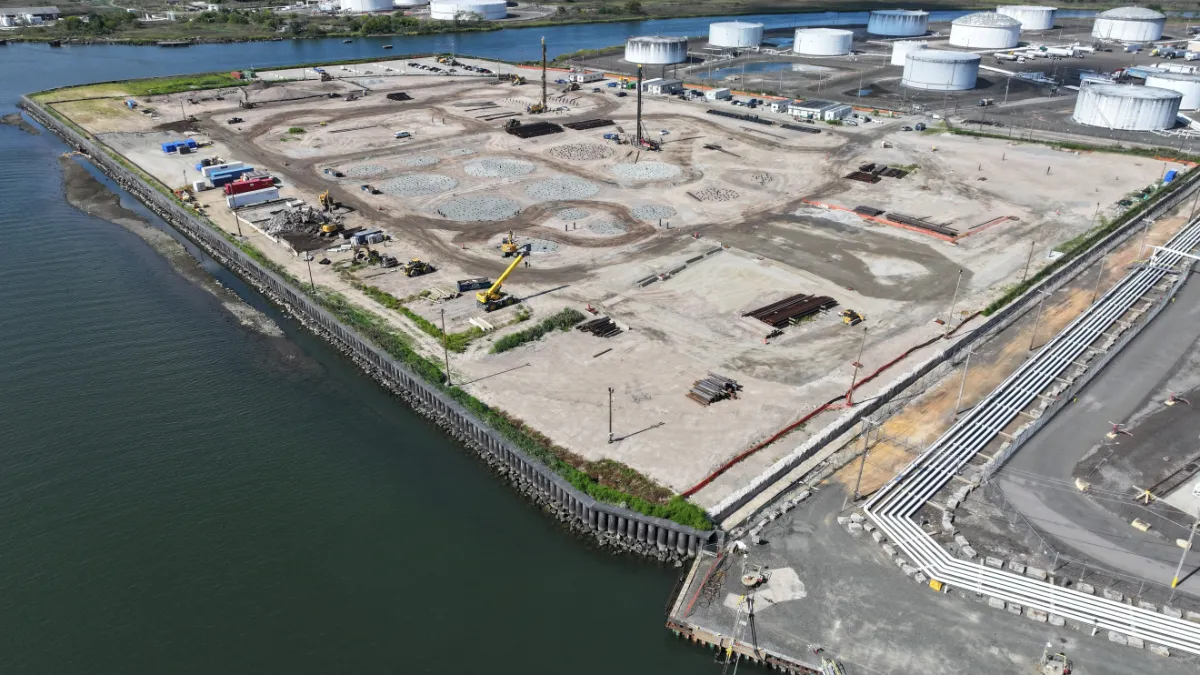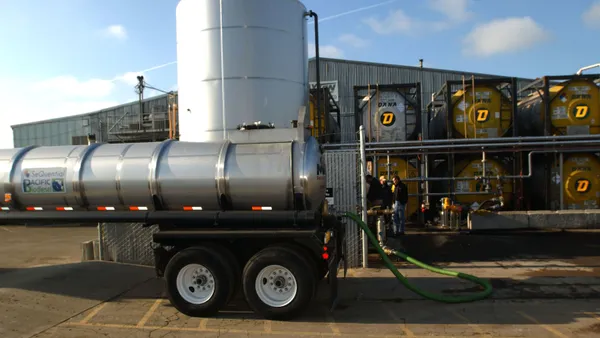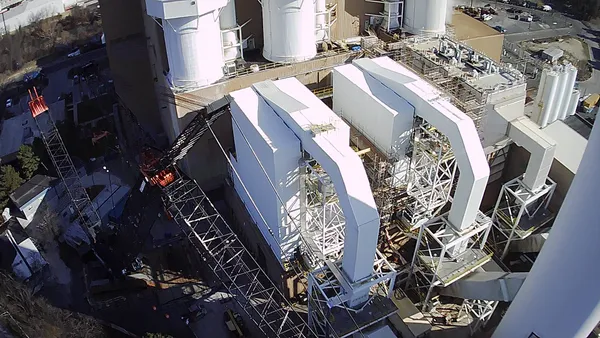October 10, 2024, could mark a pivotal moment in America’s effort to transform food waste into renewable natural gas (RNG), advancing sustainable energy production efforts.
The non-profit organization Energy Vision, recognized as the leading independent industry resource and thought leader on anaerobic digestion, awarded its 2024 Energy Vision Leadership Award to the team responsible for one of the nation’s largest food waste-to-RNG projects. This groundbreaking project is expected to:
- Produce up to 3,783 MMBtu of RNG per day, energy equivalent of 30,200 gallons of gasoline daily.
- Convert up to 1,475 tons of food waste daily, removing it from landfills and eliminating an estimated 120,000 metric tons of CO2 annually.
The food waste-to-RNG facility, which is called the Linden Renewable Energy (LRE) project and is located in Linden, NJ, will process waste streams from the New York City metro area. LRE is slated for completion in 1Q 2026.
“The LRE project will create many jobs, have the potential to reduce greenhouse gases and make use of innovative technology,” says Steven Cocchi, Senior Vice President & CFO for SJI, the project’s majority owner. “It’s a privilege to celebrate our collective achievements and the future we are shaping.”
Right time, right solution
LRE’s recognition couldn’t come at a better time. While overall RNG production is surging, food waste conversion only accounts for a small fraction of the RNG total. Agriculture and landfill are by far the leading sources of anaerobic digester technology. Today food waste generates 58% of landfill methane emissions. Thirty to forty percent of all U.S. food goes to waste, costing $220 billion each year. The idea of “… tapping America’s massive organic waste streams as a renewable energy resource” is a powerful and compelling argument for RNG production.
The LRE facility is an important advance as, once complete, this project could be one of the largest food waste-to-RNG anaerobic digester (AD) facilities in the U.S. according to the Argonne National Laboratory, which maintains a database of domestic biogas projects.
“Renewable energy development is an integral element to our strategic approach,” explains SJI’s Cocchi. “In addition to providing safe, reliable and affordable energy to more than 730,000 New Jersey customers, SJI is committed to investing in sustainability efforts.”
Just the beginning
“SJI and its subsidiaries have other RNG projects in some phase of development at about two dozen dairy farms (manure-to-RNG) and we continue to invest in other renewable energy technologies,” Cocchi says. “For example, our development subsidiary, SJI Renewable Energy Ventures, develops and advances sustainable energy solutions, with the core focus on RNG.”
RNG production may not be a silver bullet for the country’s growing energy needs. No energy source can be. But RNG could be a big difference-maker. Energy Vision studies estimate that processing half of the nation's inedible food waste, while redistributing the edible portion, could reduce overall U.S. methane emissions by nearly 14%. “ADs are proven and scalable now. U.S. organic waste is a huge climate liability if left unaddressed. It’s also a major energy resource that remains largely untapped. Scaling up ADs changes that. They offer the biggest bang for the buck,” writes Matt Tomich, Energy Vision president.
The project supports New York City, northern New Jersey and the entire metro area with a better way to comply with state and local regulations that restrict food waste to landfills.
Other RNG advantages include:
- Generally interchangeable with traditional natural gas.
- May be distributed in the same pipeline system as traditional natural gas.
- Available for electricity generation, heating homes and businesses and fueling trucks, buses, trains, and even ships.
SJI is pleased with how the award may help draw attention to RNG and inspire others to make similar sustainability investments. For a nation searching for cleaner, robust energy solutions, the LRE facility represents a major step forward.










